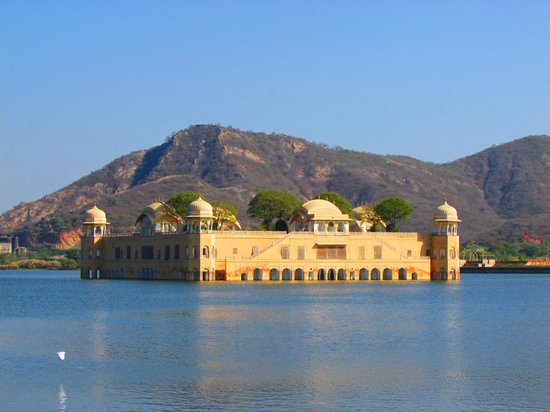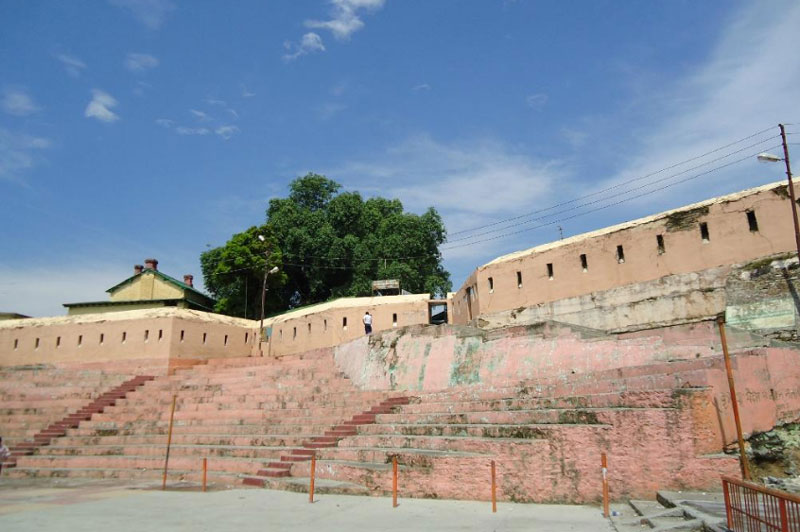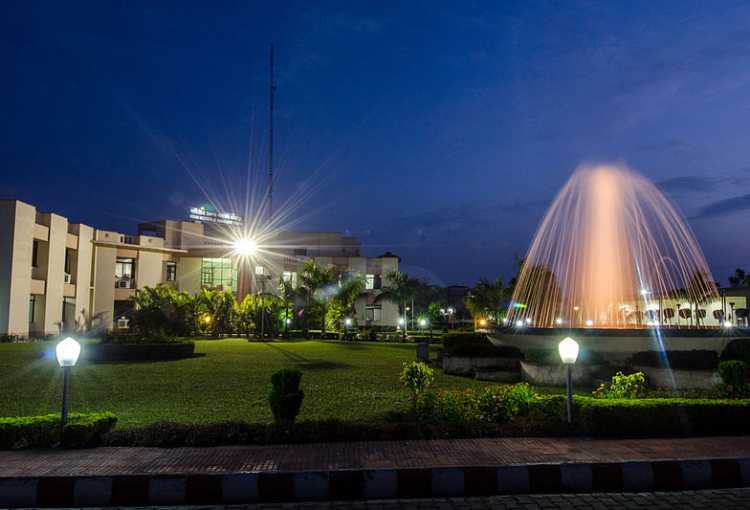The Gadisar Lake was comstructued by Raja Jaisal, the first ruler of Jaisalmer and later reconstructed by Maharawal Gadsi Singh in the year 1367 AD. It is said this rain lake once provided water to the entire toen. At present Gadisar Lake gets water from Indira Gandhi Canal so it never dries. Located towards the south of Jaisalmer city, the entrance to the Gadisar Lake is through a magnificent and artistically carved yellow sandstone archway that is knows as the Tilon-Ki-Pol. There are numerous shrines and small temples on the embankmet of this lake. The most popular among these temples is the krishna Temple which houses a statue of lord Vishnu. There is a big domed pavilion in the center of the lake. The main attractions of the lake are the different species of birds, which migrate from distinct places.
Gadsisar Lake was a water conversation tank built in 1400 AD, and was constructed under the reign of Maharwal Gadsi Singh. If a traveller wants to enjoy bird watching on their tour to Jaisalmer, then Gadsisar lake is the right place to be. On the bank of Gadsisar lake one can see a gateway made of yellow sandstones known by the name of Tilon Ki Pol. A Krishna Temple is located by the side of the archway.
An interesting fact about the lake is that it never dries as it gets continuous water supply from the Indira Gandhi Canal. One can enjoy a calm and smoothing boat ride on this lake. Gadsisar Lake is home to multiple variants of catfishes as well.
About Gadisar Lake

Located in the Thar Desert and almost 30 km away from Pakistan border, The Golden City of India, Jaisalmer houses plenty of historical monuments at present.
Among the most striking man-made features of Jaisalmer is the Gadisar Lake. Built amidst the arid region of Rajasthan, this lake impersonates the beauty of an oasis.
Located on the outskirts of Jaisalmer, visiting Gadisar Lake would be rated as one of the best things to do in Jaisalmer for watching the sunrise.
This manmade lake built around the 12th-13th century is now a popular spot with visitors. It is an ideal getaway for architecture lovers, culture enthusiasts, and peace seekers. For a relaxing experience in Jaisalmer, visit this place while you are entitled to soak in the mesmerizing view of the sun setting down in the evening.
Whether you like to spend some quiet time by yourself or have fun with your family and friends, Gadisar Lake has a handful of experiences to offer. You might want to begin with taking a tour around Gadisar Lake.
Explore the beauty of the lake while you take a walk and watch some migratory birds flying around it. Moreover, you can visit the Desert Culture Centre and Museum for indulging into the historical aspects of Jaisalmer.
With intricately carved temples and Tilon ki Pol, the city welcomes you into the beautiful Gadisar Lake. It is situated close to Jaisalmer fort and temples.
Mention below is a rundown of the perfect options for a blissful experience of Gadisar Lake.
How to Reach Gadisar Lake

Jaisalmer Railway Station is almost 2 km away from the Gadisar Lake. There are plenty of ways to reach Jaisalmer’s jewel, Gadisar Lake, from the railway station. The quickest way to get to the lake is by hailing a taxi or auto rickshaws.
Or, you can book an online cab and reach your destination. If you want to explore the local whereabouts of the city, you can also take a rickshaw from the railway station to Gadisar. The journey will take approximately 10 minutes. Also, the Jaisalmer Fort is situated very close to the lake. You can take a walk too.
Best Time to Visit Gadisar Lake

Winter is a really good time to visit if you want to avoid the scorching heat of the desert. Jaisalmer’s weather is mostly hot. Winters are cool and breezy while summers are hot and dry. Also, the lake experiences heaviest tourist traffic during winters.
Plan your trip early to save money on accommodation. You might have to pack a heavy jacket with you for chilly nights.
In the spring season, Jaisalmer starts getting warmer. The visit should be completely avoided during April to June as the temperature can easily exceed 40 degrees Celsius. The weather from July to September can be humid and sweaty.













9 Comments
Comments are closed.